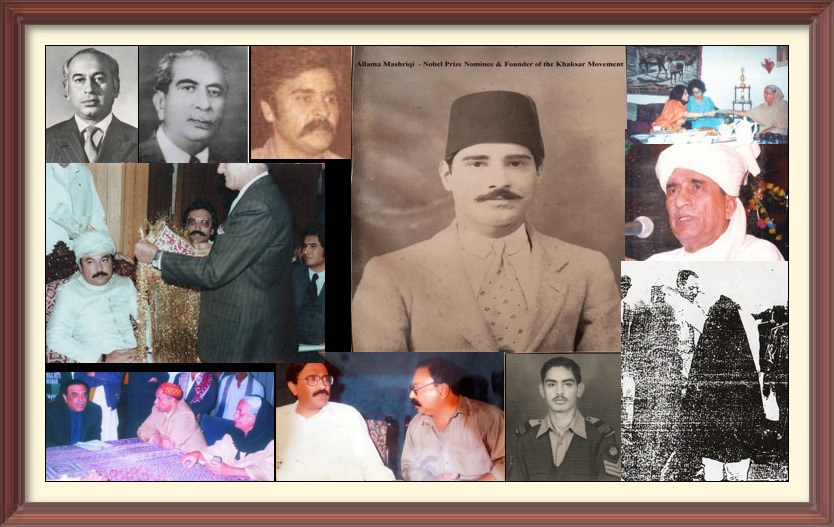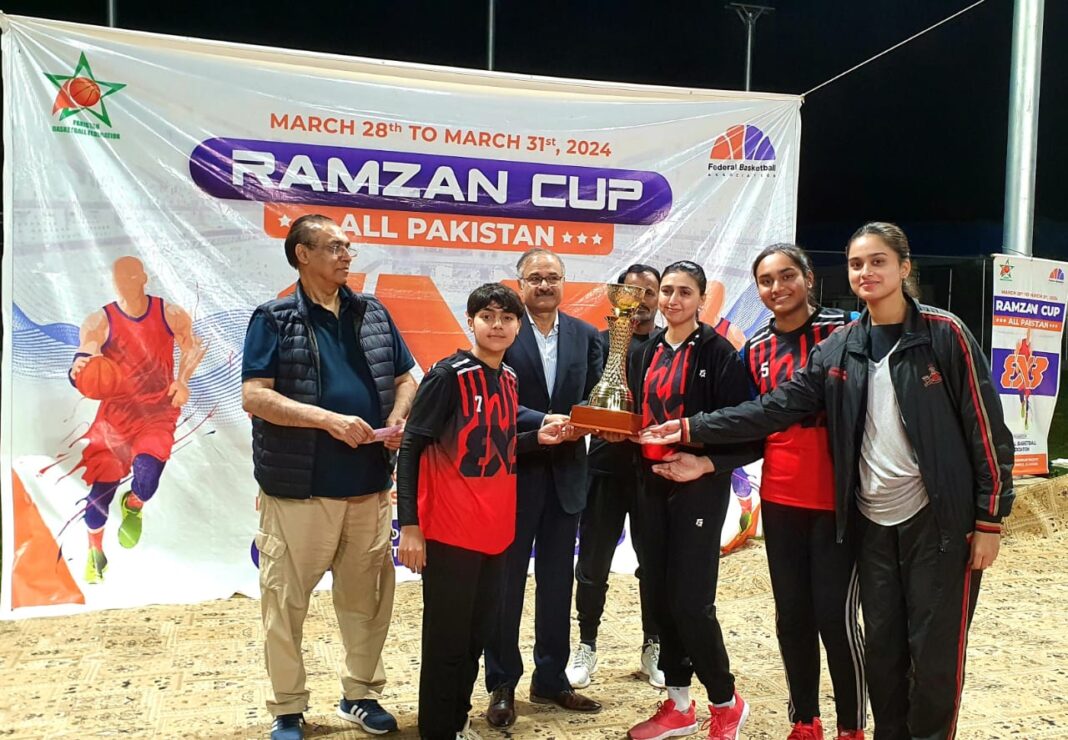By: Nasim Yousaf
A historical review of Pakistan’s political landscape reveals intriguing connections that have shaped the course of the nation’s history. Delving into the intertwined past of Allama Mashriqi, the Bhuttos, and the Zardaris uncovers fascinating relationships that have often remained unexplored. From Sir Shah Nawaz Khan Bhutto’s affiliation with the Khaksar Movement (source: Gul Hayat Institute, Sindh) to Zulfiqar Ali Bhutto’s deep admiration for Mashriqi, and President Zardari’s ties with Mashriqi’s descendants, these historical threads offer insights into the intersections of politics, ideology, and familial bonds. As a biographer of Mashriqi, I have been asked to shed light on these connections for the record. I will delve into the historical tapestry of the Mashriqi-Bhutto and Mashriqi-Zardari relationships separately.
Before delving into Sir Shah Nawaz Khan’s association with the Khaksar Movement and Bhutto’s deep admiration for Mashriqi, we need to understand the context or background of the reference. Keep in mind that Mashriqi was no ordinary personality; he was a world-famous mathematician who shattered academic records at the University of Cambridge, becoming the first Muslim scholar whose book, “Tazkirah” was nominated for the Nobel Prize in Literature by scholars from both the East and the West. Scholars worldwide acknowledged his work, including Albert Einstein, who admired Mashriqi and introduced him to his wife during a meeting at his house in Germany in 1926. For more details, refer to my piece “Einstein & Other Scientists’ Meetings with Allama Mashriqi.”
Mashriqi’s establishment of a formidable private army was recognized by British authorities as the most potent threat to their rule. The British worked with weaker leaders without street power, easily sidelining them if they resisted their agenda. Yet, they kept these leaders in the limelight to portray them in masses as influential. Mashriqi refused to accept any form of control. Consequently, there was no collaboration or partnership between Mashriqi and the rulers.
Mashriqi’s first wife, Wilayat Begum, was the sister of Mohammad Sharif, who was titled “Maulvi” (an honorary title) and appointed as a Justice of the Peace by the British Governor General in Council in united India. His large land holdings led to the naming of Sharifabad near Nawabshah after him. His second wife, Kaniz Fatima, was a politician and District Council Member. In the 1960s, President Mohammad Ayub Khan went to Nawabshah to seek the support of Sharif’s family against Fatima Jinnah, a sister of Jinnah. There, Kaniz Fatima received the President at the Nawabshah airport. Mashriqi’s niece, Waheeda Begum, married Mohammad Yousaf, son of Estate Magnate Mohammad Shafi (also titled Maulvi), after whom Shafiabad Railway Station was named. Aisha Begum, Mashriqi’s sister, married into Sir Ghulam Hussain Hidayatullah’s family, Sindh’s Premier and first Governor post Pakistan’s formation, showcasing the esteemed Mashriqi lineage and the family’s significant influence.
Recognizing Mashriqi’s influence and power, notable figures from Sindh acknowledged Mashriqi’s potential to challenge British rule, leading them to align with the Khaksar Movement to end British rule. Members included G.M. Syed, Muhammad Hashim Gazdar (a Member of the Legislative Assembly), Yusuf Abdullah Haroon (son of Sir Abdullah Haroon), and Barrister Ghulam Mustafa Khan Bhurgri. Mir Ali Ahmed Talpur, Mir Rasool Bakhsh Talpur, and Pir Ilahi Bakhsh (who served as Chief Minister) also joined the Khaksar Movement. Moreover, influential families like the Bhuttos, Talpurs, Soomros, Abros, Khuhros, Halepotos, and Jatois from Sindh rallied behind the movement. Refer to the “Note” at the end for some of these prominent names.
Understanding Sir Shah Nawaz Khan’s Khaksar Movement affiliation and Zulfiqar Ali Bhutto’s admiration for Allama Mashriqi is evident. Bhutto’s profound respect for Mashriqi surfaced notably in the 1970s during meetings with Mashriqi’s daughter, Masuda Yousaf (my mother), and son, Inamullah Khan Akram (my uncle). Bhutto swiftly confirmed Masuda’s appointment, expressing unusual haste, through his Military Secretary. During their meeting in Rawalpindi, Bhutto hailed Mashriqi as an “inspiring personality,” “mathematical genius,” and “indomitable freedom fighter.” This admiration extended to Akram, culminating in Bhutto offering him a parliamentary seat despite Akram’s lack of political activity or involvement with the Pakistan People’s Party (PPP), solely due to his lineage as Mashriqi’s son.
Bhutto’s admiration for Mashriqi was more than mere words; it manifested in his policies and actions, resonating with Mashriqi’s vision for a just and empowered society. Bhutto’s focus on grassroots mobilization, fiery speeches, and dedication to social justice echoed Mashriqi’s ideals for an equitable society and the upliftment of the masses. His initiatives to empower women, notably his daughter Benazir Bhutto, reflected a larger vision for social and economic reform akin to Mashriqi’s endeavors in the 1930s. Explore further in my works: “The Khaksar Women Who Fought for Our Freedom: Allama Mashriqi Pioneered Female Empowerment” and the book “The Khaksar Women: Warriors for Independence.”
Bhutto’s formation of the Federal Security Force (FSF), akin to Mashriqi’s Khaksar Movement, presents an intriguing parallel despite their differing goals. Politicians often draw inspiration from historical figures like Mashriqi, evident in Jinnah’s adoption of some of Mashriqi’s ideas such as the Muslim League National Guard and the Women’s National Guard. Jinnah’s iconic slogan “unity, faith, and discipline” echoed the core ideology of Mashriqi’s Khaksar Movement, illustrating the common practice of leaders finding inspiration from predecessors without explicit acknowledgment.
The enduring ties between the Bhutto and Mashriqi families are highlighted by the late Prime Minister Benazir Bhutto’s appointment of Syed Qaiser Hussain Zahidi, an ICS and Mashriqi’s niece’s husband, as Director-General of the Prime Minister’s Inspection Team. Furthermore, Mashriqi’s grand-nephew, Tanveer Azhar, a recipient of the Hilal-i-Imtiaz, was appointed by Benazir as Chairman of the Power Planning Commission of Pakistan. Additionally, a 2013 meeting between Fatima Bhutto, Ghinwa Bhutto, and Mashriqi’s daughter-in-law, Dr. Sabhia Arshad Al-Mashriqi, at the provincial headquarters of the Khaksar Movement in Larkana underscores the Bhutto family’s ongoing interest in and connection with Mashriqi’s legacy, where both Fatima and Ghinwa sought information on Mashriqi.
Turning to the Zardari family, we discover Hakim’s alignment with Mashriqi’s goal of ending British rule through the Khaksar Movement (The Express Tribune, March 25, 2011). This led him to join the party and commence his political journey within its ranks. Zardari, donning a Khaksar uniform, holding a belcha—a symbol of the Khaksar Movement reflecting the power of the labor class and the leveling of society—and marching; he also actively disseminated Khaksar material, spreading Mashriqi’s message of freedom from British rule. Like Mashriqi, Hakim critiqued the Governor General of Pakistan Jinnah’s politics vehemently; I have yet to hear a Pakistani politician with the guts to denounce Jinnah like that. Hakim’s interview is on the Internet.
The relationship further evolved with a close friendship developing between Hakim’s son, Asif Ali Zardari, and Mashriqi’s nephews, the sons of Sharif mentioned above (Ehtesham, Ehsan, Inam, Ikram). This friendship deepened, along with a growing bond between Asif’s sister, Faryal Talpur, and Mashriqi’s niece, Gul Bano. Residing in Nawabshah (Sindh), they found a second home in each other’s company, with their bond solidifying further when both Asif and Ehtesham enrolled at Cadet College Petaro.
The connection extended beyond the Sharif family, leading to a new chapter in their intertwined histories. Asif Zardari and Waheed-ud-Din Akbar (Mashriqi’s son, also at Cadet College Petaro) forged a friendship. Meanwhile, Akbar, along with numerous dissatisfied cadets, including Asif, boldly took over the college from its principal, S.S. Azim, on April 5th, 1972.
Akbar, known for his remarkable leadership akin to his father Allama Mashriqi, assumed the role of Principal following the takeover, with Zarar Lucman as Vice Principal, Mohammad Nasim as Adjutant, and Asif Zardari (then Asif Ali Baluch) as Bursar. This event marked a significant moment in the history of Cadet College Petaro’s history, catching the administration off guard. A letter from the principal, dated April 6th, 1972, detailed their occupation of various offices on April 5th and 6th, 1972. Copies were dispatched to high-ranking officials, including the Governor of Sindh, highlighting the magnitude of the event both within and beyond the college.
In 1973, Ehtesham faced tragedy, a brief account of which follows: During a break from Cadet College Petaro, Ehtesham and his elder brother Inaam Sharif were unwinding at their family farmhouse in Sharifabad on August 13, 1973. Suddenly, they were ambushed by unknown assailants who opened fire in the darkness of the night. The attack proved fatal for Inaam, who tragically lost his life on the spot. Ehtesham was quickly taken home, where Asif promptly arrived. Ehtesham’s brothers (Ahsan and Ikram) and Asif rushed him to the hospital. The doctors later revealed the grim news: Ehtesham had been left paralyzed by the bullets that had grievously injured his spinal cord, so the three moved him to Jinnah Hospital in Karachi. This life-altering event occurred when Ehtesham, a Junior Under Officer from Iqbal House at Cadet College Petaro, was just beginning to enjoy a brief respite from his studies.
Ehtesham stayed in the hospital for 18 months. Ikram stayed with him, taking care of his brother. I went to see Ehtesham in Karachi. Asif regularly checked on his progress and brought homemade food for both brothers. If Asif couldn’t make it, he would send the food with his driver. I also remember Asif had left free passes for Bambino and Scala cinemas, both owned by his father and located in Karachi. Sadly, Ehtesham eventually succumbed to his injuries and passed away on January 14, 1975. Ehtesham and Ikram greatly admired Asif’s brotherly gesture. To them, Asif was “A friend in need is a friend indeed,” which I am told by others too.
Following Ehtesham’s tragic passing, the bond between Asif and Ikram grew stronger. In 1986, Ikram got married, with notable guests from Nawab Shah and beyond attending, including Brigadier Afzal Malik (Ikram’s maternal uncle) and Lt. General Zakir Ali Zaidi. Asif Zardari played an integral role, standing alongside Ikram as a friend, akin to a brother. The subsequent year saw Asif marry Benazir Bhutto with Ikram reciprocating the support. Upon Benazir Bhutto’s assumption of the Prime Minister office and her residence in Rawalpindi, Ikram frequented the Prime Minister’s house, continuing their close association.
Despite Ikram’s subsequent passing, the enduring link between the Zardari and Mashriqi families persisted. On a death anniversary of Zulfikar Ali Bhutto, Hameedud Din Al-Mashriqi (son of Allama Mashriqi, who passed away on January 10, 2010) and Dr. Sabiha al-Mashriqi (Mashriqi’s daughter-in-law) visited Garhi Khuda Bakash in Larkana District (Sindh). They offered condolences and prayed that God may grant Bhutto eternal peace.
In conclusion, the connection between the Bhuttos, Zardaris, and Allama Mashriqi and his descendants remains a notable aspect of history. This remains true despite the different objectives pursued by the Bhuttos, the Zardaris, and Allama Mashriqi and his descendants. Exploring this historical connection could yield valuable insights for historians. However, this exploration is hindered by the inaccessibility of documents related to Mashriqi, spanning from his birth in 1888 to his death in 1963. Currently, only a few British files and a scant number of other materials, which can be counted on fingertips, are available in libraries. The sheer volume of Mashriqi’s Khaksar material is so immense that it would require extensive archival facilities to store it adequately. It would be a great service to the nation if President Zardari, who is in power, could order the declassification of Mashriqi and the Khaksar Movement’s pre- and post-partition of India confiscated documents. This is something no other President or Prime Minister of Pakistan has done in its history for mere political reasons, ignoring the nation’s interest in knowing the hidden facts of its history. Asif Zardari would be remembered as a daring President who took this step, for no government has released these papers to date, to uncover the truth for the people.
Note: The names below are examples sourced from the Gul Hayat Institute in Sindh:
Wadero Arbab Khan Bhutto (Salar), Wadero Arbab Ali Bhutto (Salar) Abdul Rahim Bhutto, Mir Haji Khair Muhammad Khan Talpur (Salar), Molvi Muhammad Juman Khan Talpur (Salar), Allah Dino Soomro, Doda Khan Soomro, Muhammad Mian Halepoto (Salar), Muhammad Qasim Halepoto (Salar), Mir Muhammad Khan Halepoto (Salar), Faqir Muhammad Abro, Nawaz Khuhro, Ali Nawaz Jatoi (Salar), Muhammad Khan Bhurgri (Salar), M. Hussain Bhurgri (Khaksar Salar), Suleman Khan Bhurgri (Salar).
Scholar Nasim Yousaf has dedicated over two decades to writing about the history of the Indian subcontinent, beginning his research in 1996. As the grandson of the freedom fighter Allama Mashriqi, Yousaf has authored 19 books and digitized 19 rare works. His monumental works include digitizing Mashriqi’s historic and rare journal ‘Al-Islah’, a book on Khaksar women, and a 2.5-hour documentary titled “The Road to Freedom: Allama Mashriqi’s Historic Journey from Amritsar to Lahore”. Detailed information about his biography and books in world libraries is available on the internet
Copyright © 2024 @NasimYousaf



